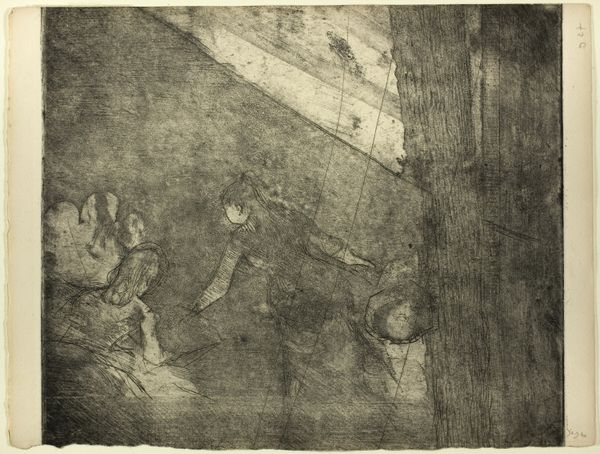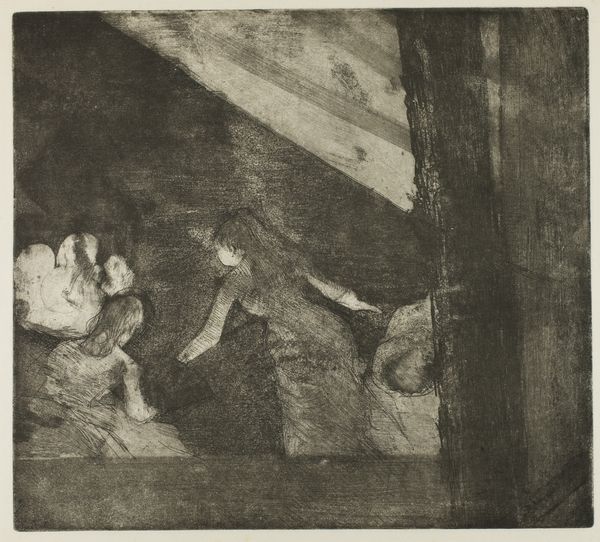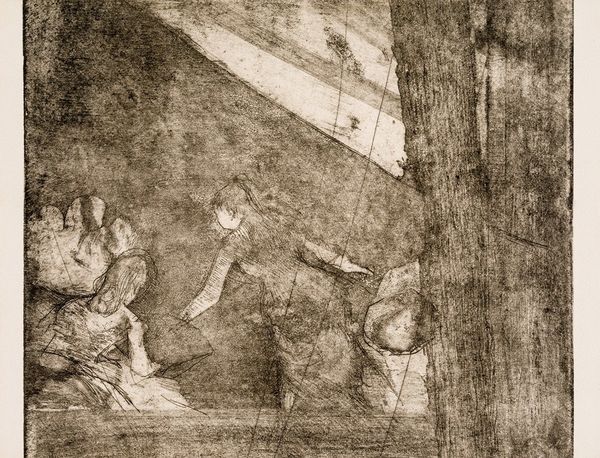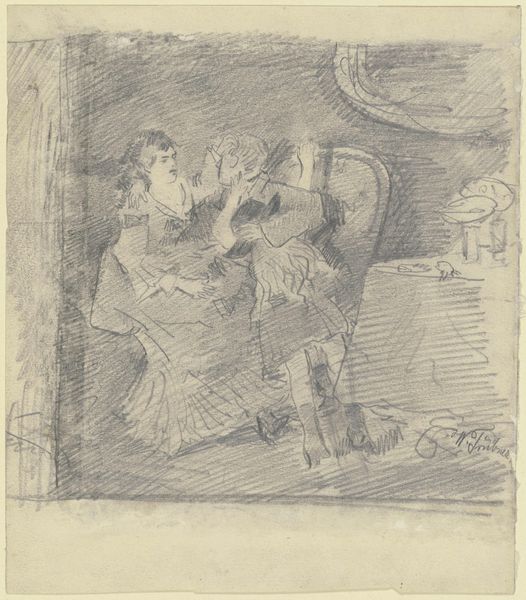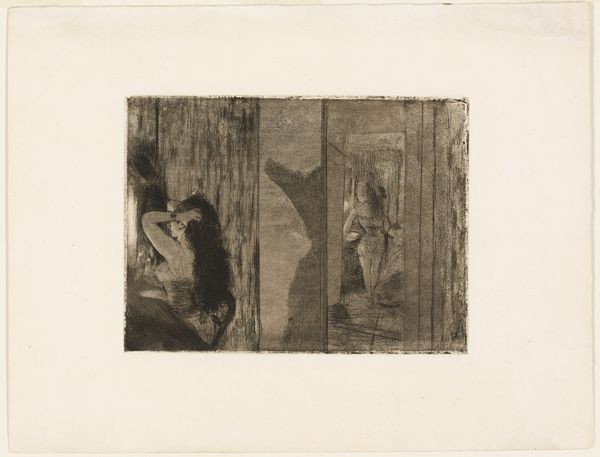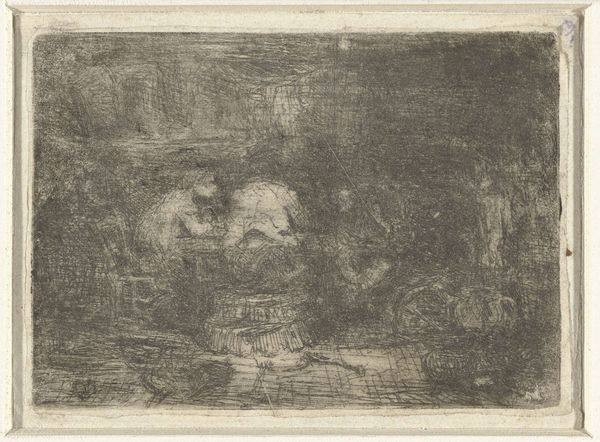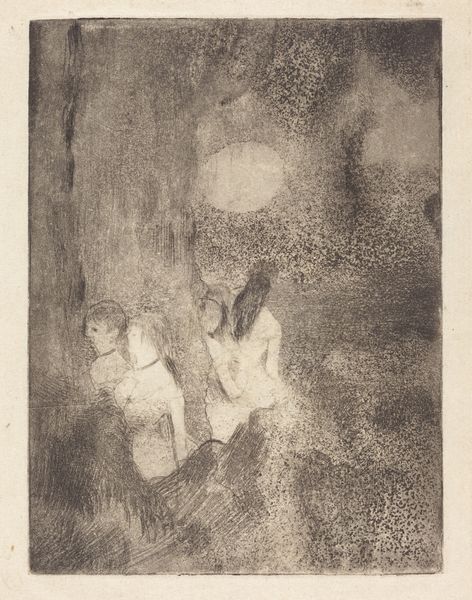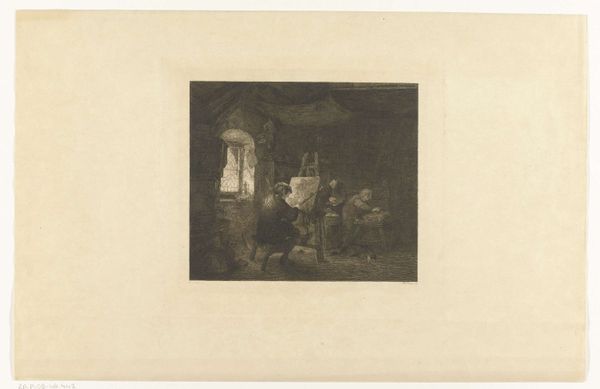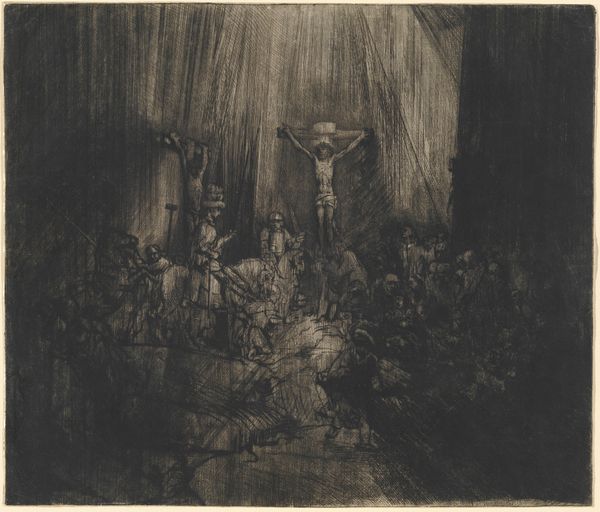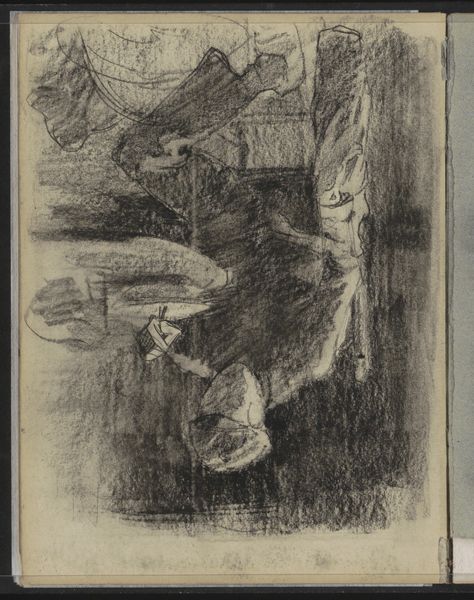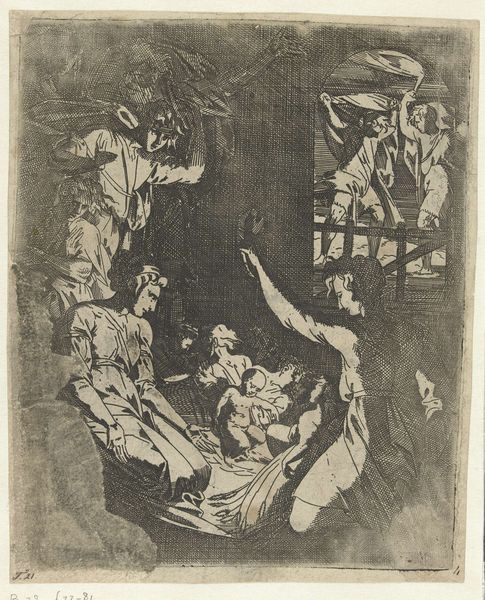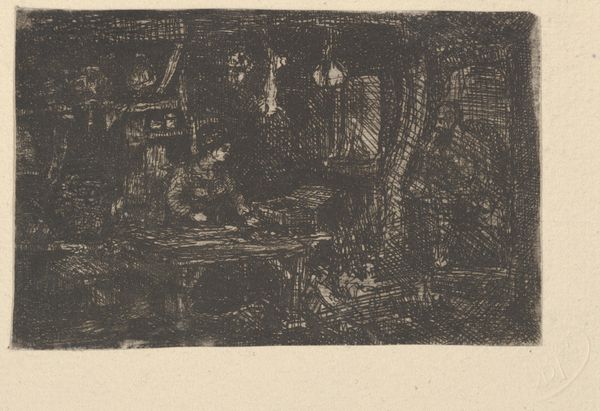
drawing, print, etching
#
drawing
# print
#
impressionism
#
etching
#
genre-painting
Dimensions: sheet: 12 7/8 x 15 11/16 in. (32.7 x 39.9 cm) plate: 10 1/2 x 11 9/16 in. (26.7 x 29.3 cm)
Copyright: Public Domain
Curator: This etching by Edgar Degas, dating from 1879 to 1880, offers a glimpse into "At the Café des Ambassadeurs," a work currently residing here at the Metropolitan Museum of Art. Editor: Oh, there's something deliciously shadowy about it, like a half-remembered dream in sepia tones. It’s ghostly but very much alive. What's holding my attention are those stark geometric forms competing with more vague figures. Curator: Degas uses etching in such an inventive way. He really highlights the textures and tonal qualities that come forward when using metal plates and acid. He captures the electric energy of the café using almost primitive techniques. It is fascinating to observe the tools influence the final work, rather than the artist overcoming their limitations. Editor: Yes! The scratching away, the biting of acid—the materials truly echo the social unease, no? I sense a distance between people despite being crowded together in what ought to be a joyous public setting. Curator: That's very much Degas’s focus, and I'm struck by the artificiality and tension between performers and patrons and how the bright light on the stage exposes everyone, artist and spectator. This also serves as a comment on labor conditions. By using the visual techniques of an etching, he captures an impressionistic landscape from real-world labor. Editor: It does make one wonder about their labor conditions, what were they making and who would purchase them? And this artificiality that is reflected in Degas' print becomes art that itself must be distributed and sold for commerce to occur. He becomes both producer and an observer. It all comes around full circle. I see how he reflects the changing means of making and the means of distribution! Curator: And what about the human cost of art making? Etching can be difficult—it involves harsh acids, and creates byproducts. Editor: Absolutely! You can consider not just the finished product hanging pristine on a gallery wall, but the studio practices—the conditions of production of making, distributing, and ultimately showing these impressions! Thank you, Degas!
Comments
No comments
Be the first to comment and join the conversation on the ultimate creative platform.
